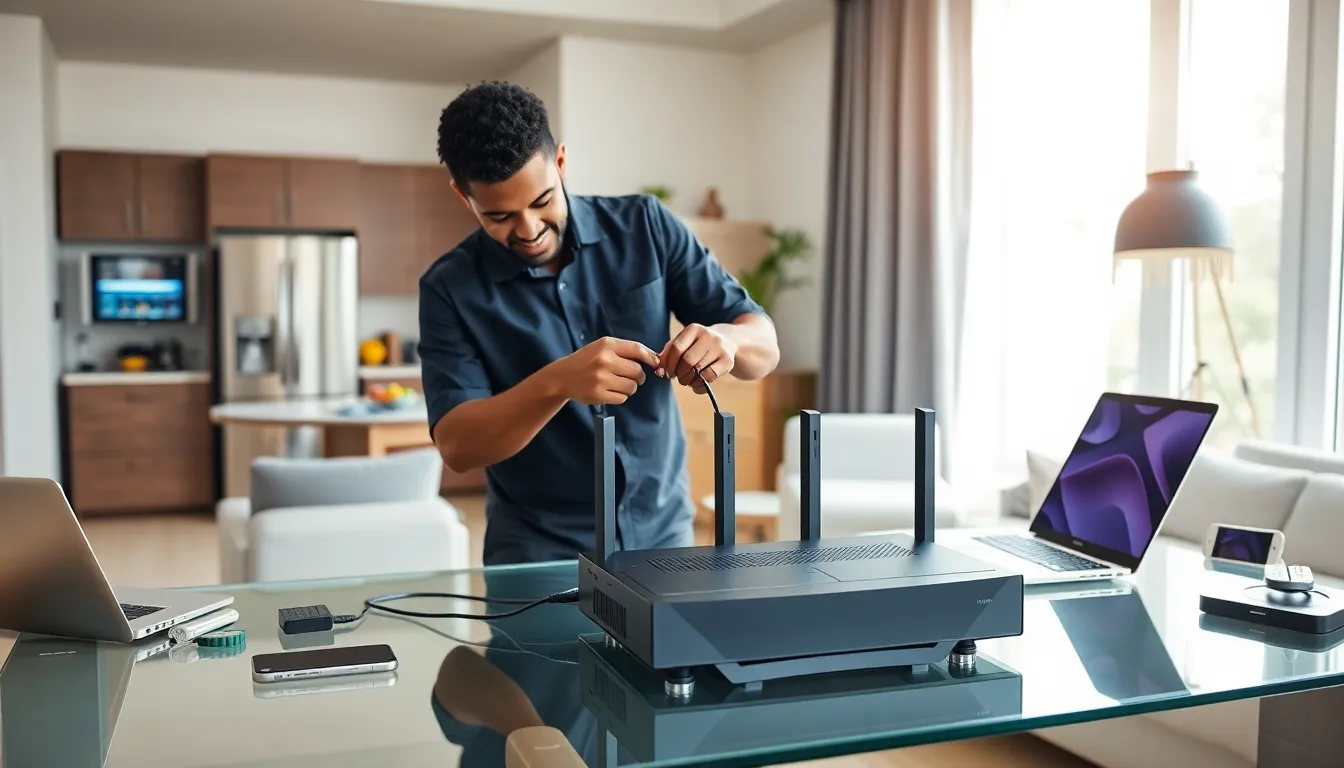In today’s digital age, where binge-watching, video conferencing, and gaming collide, a reliable home network is no longer a luxury, it’s essential. Imagine trying to stream your favorite show and the screen freezes, or you’re in the middle of an important Zoom call and everyone’s frozen except the cat. Frustrating, isn’t it? That’s where home networking installation services come in. They ensure you get the most out of your internet experience, tackling everything from installation to optimization. So, let’s explore why investing in these services is a decision made by wise network enthusiasts and casual users alike.
Table of Contents
ToggleUnderstanding Home Networking

Home networking is all about connecting devices within a residence to share resources and access the internet. Think of it as your digital neighborhood where your devices communicate, exchange data, and stay connected to the outside world. A well-structured home network not only improves internet speed but also enhances your interaction with smart devices, gaming consoles, and printers alike. Whether it’s your laptop, smartphone, or smart fridge, each item adds to the intricacy of your home network. Getting this setup right requires an understanding of the components involved.
Importance of Reliable Home Networks
Why is a reliable home network vital? Consider this: families today often have multiple users and devices vying for internet access. The need for fast and dependable connectivity is paramount, especially if multiple people are streaming or gaming simultaneously. Without a strong network, not only could you experience lag, but the overall quality of your internet service might plummet. From online-learning sessions for children to telecommuting for adults, the implications of an unreliable network stretch far and wide. So, investing in professional home networking installation services ensures that your activities flow smoothly.
Types of Home Networking Services
When it comes to home networking services, understanding what type you need can streamline your installation process.
Key Components of Home Networking
Typically, a standard home network consists of modems, routers, switches, and sometimes extenders. These components work together to ensure that data travels efficiently throughout your home. Modems connect your home to the internet while routers distribute the signal to your devices. Switches allow more devices to connect to the network, and extenders can boost the signal in areas where it’s weak.
Wired vs. Wireless Networks
You might wonder whether to go for a wired or wireless network. Wired connections generally offer higher speeds and lower latency, making them an ideal choice for heavy users engaged in gaming or video conferencing. But, wireless networks provide the flexibility and convenience that many families prefer. The ultimate choice usually depends on your household’s unique needs.
Choosing the Right Equipment
Choosing the right equipment can make or break your home network’s efficiency. Not all routers are created equal: some boast extended ranges and faster connections. Professional installation services often feature equipment recommendations tailored to your specific situation, ensuring you’re equipped with the best tools for seamless connectivity.
Steps for Professional Installation
Getting started with professional installation is a breeze when you know what to expect.
Initial Assessment and Planning
Initially, technicians will assess your home’s layout and the existing infrastructure. This step involves determining the best locations for routers, extenders, and any wiring needs. Smart planning can significantly improve performance, so don’t underestimate this stage.
Installation Process
Once planning is complete, the installation process kicks off. This includes setting up hardware, configuring network settings, and ensuring all devices are integrated. To many, this might sound like a simple plug-and-play task, but professionals ensure that everything is optimized for performance and security before leaving your home.
Testing and Optimization
Post-installation, testing the network is crucial. Professionals will run diagnostics to check the speed and connectivity across various devices, ensuring everything runs smoothly. They’ll make adjustments as necessary, so your network isn’t just functional, it’s optimized for your unique usage.
Common Challenges and Solutions
As with any technology, issues may arise, and understanding how to tackle them is pivotal. One of the most common challenges homeowners face involves connectivity issues.
Troubleshooting Connectivity Issues
Connectivity problems can stem from various factors, including interference from other devices, poor router placement, or even outdated equipment. Learning troubleshooting techniques, like rebooting your router or changing its position, can frequently solve these issues. But, knowing when to call in professionals is crucial. Their expertise can expedite problem-solving and enhance your network’s overall performance.
Maintaining Your Home Network
Once installed, ongoing maintenance is essential to keep your home network functioning at its best. Simple steps can ensure longevity and reliability. Regularly updating your router’s firmware is vital to safeguard against security vulnerabilities. Also, routinely monitoring your network’s performance can help you catch and resolve vulnerabilities early on. Professionals often offer maintenance packages, taking the burden off the homeowner while ensuring optimal performance.
Future-Proofing Your Network
As technology evolves, so should your home network. Future-proofing is about setting up a system that can grow with your needs. Opting for equipment that supports the latest standards can make a significant difference. For instance, selecting a router with Wi-Fi 6 capabilities ensures your network can handle more devices and provides better speeds. It’s a bit like investing in a car that can go the distance: you want something that won’t let you down as you add more gadgets and gizmos.









